Escaping Michigan
After a couple of climbs up Shasta (West Face and Cascade Gulch) I decided to give the Casaval a go. Unfortunately, my would-be climbing partner bailed at the last minute. Allegedly his wife saw "Avalanche Gulch" on the SP page and vetoed the idea. I tried to explain that we would be taking a route not known for avalanches (other details omitted). No luck. He was out. The Casaval seemed out of the question, so I planned for the west face again.
I packed up and flew to Sacramento, bummed at the prospect of taking a route I'd already climbed. At The Fifth Season, an employee saw me studying a large photo of the Casaval. He asked if I planned to climb it, but I meekly admitted I wasn't since I was soloing. We talked for a while about my experience level and the route, he encouraged me to give it a go (and bail down the West Face if needed), then rented me a shovel. Off I went, shovel in hand, to climb the Casaval.
Day 1 - Solitude
I arrived at Bunny Flats to find a beautiful sight: only a handful of cars in the parking lot, and snow piled nearly ten feet high. It was relatively cool outside, and I knew from the weather reports that the mountain was well below freezing at night, dropping into single digits above about 12k. With no bad weather on the horizon, conditions looked ideal. It hadn't snowed in almost a week, and the sun had done its job on the snow.
A family of French tourists pulled into the spot next to me as I went through the usual gear explosion. I said hello and smiled; they nodded but said nothing to me. Instead, mother, father, and their two young sons got out and stood no more than five feet away, staring in silence as I packed. This went on for a good ten minutes.
Weird?
Oui.
I kept packing, but yeah... it was awkward. Eventually, the woman started talking to me in nearly perfect English. The husband chimed in. "You are going climbing?" I told them I was. They asked how far I planned to go. "All the way." The dad looked surprised. (Where else would I want to go?)
"Where is your team?" he asked.
"It's just me."
The French lady look mortified.
"Does your mother know?," she asked me.
They asked all sorts of questions for the next half hour before wishing me luck and driving off. I filled out the paperwork, grabbed my kitty litter bags, and made good time on firm snow.
I didn't see anyone all the way to Horse Camp. As I got near, though, I began to hear a group of people yelling, laughing, and, well, being
loud. I don't mind a good time, but the noise seemed obnoxious out here. I avoided them and moved on to 9500 feet where I stopped to set up camp. I brought a bivy bag for shelter, so I dug a little trench with a small hole for a kitchen, and another hole for my pack. Thinking back on it I should have gone ahead to 10,000 feet or so, but it wasn't a big mistake.
The winds were light, temperatures nice and cold, and the sunset was amazing. I enjoyed a nice dinner before getting cozy in my [heavy-but-warm] bag. I lay awake for a long while, watching the last splashes of orange and crimson from the sunset disappear, soon replaced by a brilliant canopy of stars. Far below, the lights of town twinkled. I suspect only climbers can appreciate what I was feeling right then. My mind wandered for a while as I stared upward, glad to be alone and free.
Day 2 - Challenges
I awoke a little before 5 a.m. to another amazing view: to the southwest, the full moon was setting above a pink and purple horizon. Somewhere on the other side of the mountain, the sun was just beginning to rise.
I cooked a lazy breakfast in bed, sipped on Starbucks (those little instant packs rock), and contemplated my navel for a while. I wasn't in a hurry since I was planning to carry everything up the ridge, stopping again somewhere around 12,000 feet. I'd seen pictures of small spots to camp higher up on the ridge. The exact location of those "small spots to camp" was a bit fuzzy right about then, but I figured I'd stumble onto something up there. I set off at about 8 a.m., feeling great and loving the solitude. There were some old tracks ahead of me, but it looked like nobody had been on the ridge in a several days.
Soon I stepped out and onto the ridge proper. As it got steeper and the exposure increased, I began to feel a little rush; sure, this wasn't Hummingbird Ridge, but being alone and that exposed was nice. To my left the ridge dropped steeply, ending below at the bottom of the West Face. Hidden Valley camp looked empty.
Route finding at this point of the climb was easy since the ridge is so obvious. By 11am or so, I was front pointing up the steepish (50 degree) feature that I had read was the crux of the climb. After finishing that section, I found a small patch of level snow, just big enough for a camp. I took off my pack, pulled out my sleep pad for a seat and enjoyed lunch. The sun was bright and the sky clear. I felt a little sense of satisfaction, believing that the toughest bit was behind me. Turns out it wasn't.
![Lunch at 12.5k]()
![Planning Meeting]()
The sun was beginning to warm things up a bit, so I took off my shell and stuffed it. Finished with lunch, I put on my heavy pack. I've always subscribed to the mantra "Better to have and not need than to need and not have." It's easy to take that logic too far in the mountains, of course, but I pack heavy out of respect for the storms that claim too many climbers. I had a -10 sleeping bag, down parka, Gore-Tex shell and pants, a bivy bag, and plenty of other gear. I took five days worth of food and fuel, and kept four liters of water on me. Quadriceps be damned; I'm not going to freeze to death on a mountain.
I started off again, figuring I had plenty of daylight and that I'd find a nice spot to dig a hole somewhere higher up. Then I'd wake up early, do a quick jaunt to the summit, and head out. The terrain was easy for maybe 15 or 20 minutes, but then I became a little uncertain of the route. I was looking for the entrance to the catwalk, but unsure where to go among all the large rock features. The map was useless because the scale was too large. The tracks I'd seen earlier were long gone. I entered what appeared to be a chute of some sort, confined by steep rock on both sides; while the route was steeper than what I expected, it appeared to ease up maybe 20 or 30 feet out of view, maybe near the catwalk. Wrong. After 30 feet, the slope eased up a bit, but only briefly. The deceptive, undulating chute steepened again. Once again, it appeared to only go about 30 vertical feet before easing up. So once again I climbed it. Repeat again with same effect. This was beginning to feel like a bad joke. Each time, the slope got steeper and my pucker factor higher. The weight on my back became conspicuously heavy as I climbed, pulling at me. At some point I realized that I no longer felt safe down climbing. I cursed myself at not having a second axe or ice tool; I couldn't reach my trekking poles and didn't dare try to take off my pack now. I took a deep breath, assessed the risks of down climbing versus continuing, and decided to just keep going. It had to ease up, right?
Soon, the chute narrowed and become so steep that front-pointing and
pied troisieme were out of the question, especially as the snow softened in the mid-day sun. This wasn't good. I began cutting not only steps but hand holds as well, each hold requiring 15 or 20 swings of my axe. The gradient was such that my chest regularly pressed against the snow, even as I tried to stay vertical. Standing upright, the snow was maybe 8-12 inches from my face. I would dig a handhold and two foot holes, swing my axe into the warming snow above me, then heave myself another 18 inches higher. Repeat, repeat, repeat...
I was clearly off route but felt I had little choice but to continue, envisioning a nasty series of back flips as my crampons caught if I slipped. I pushed myself to focus but fear was taking hold, which only fed my imagination.
I have no idea how many steps I cut. It took nearly three hours, though. I estimated the angle to have been somewhere between 70-75 degrees for much of the way. To my left and right were nearly vertical rock, so I had no choice but to go up.
Eventually I saw the end of the chute overhead. Unfortunately, it was a stubby, vertical wall of rock. It was maybe 3 feet high, but when you're looking
up at that while balancing on softening, nearly vertical snow, wearing a heavy pack, and no protection at all, 3 feet of rock can be disheartening. Using my axe, I did some of the world's ugliest climbing, clawing and fighting my way up and over the rock, hoping nothing came loose. In the process, I dislodged a Nalgene bottle that fell silently about thirty feet before nailing a rock and splitting cleanly in two. Bright red Gatorade exploded over the snow. The sound reminded me of the scene in
Sling Blade, when Billy Bob Thornton thwacked some guy in the head with a lawnmower blade. I felt (very) bad for littering on Mount Shasta, but there was no way I could recover the pieces. I kept going. (On the way down, I hauled out trash and wooden boards that I found, hopefully balancing the equation.)
Safe for the first time in hours, I suddenly felt spent and very stupid; I'd never taken a risk like that while climbing. The idea of just walking down the mountain and selling my gear on eBay seemed appealing right then. For the moment, I just wanted more safety. Ahead of me lay easy terrain that led up to Misery Hill; I considered heading up that way but wasn't sure I would find a sheltered place to sleep. So instead I wandered down a couple hundred feet toward the edge of the West Face, found a protected area at about 12,500 feet, dug a hole, and set up camp. That night I had a vivid nightmare of tumbling out of control down the chute.
Day 3 - Summit and Descent
I woke up a little before dawn to cold, crystal clear skies. Good signs. I turned on my phone for the first time and checked the weather; winds at 15 miles per hour on the summit and that was it. I melted a couple of liters of snow, watched the sky brighten, downed some Pop-Tarts, and set off with a small summit pack. Whatever doubts I had the day prior were gone. We humans can be quick to minimize bad experiences.
I made excellent time up the mountain; by 7:00 I was standing atop the summit, alone and enjoying a great view.
I thought of some friends I'd summited with two years earlier, and wished they could have shared the experience. Then again, I selfishly enjoyed the solitude I'd had the past three days. I soaked in the view for half an hour or so before the cold finally started getting to me. On Misery Hill I ran into the first climbers I'd seen the entire time.
Post-climb review of my actions
I did some things well on this climb and some things not so well. I'll take a look at the win column first before looking at some mistakes.
First, my fitness for this climb was solid. While I wasn't in peak condition, my cardiovascular fitness routine (4-6 days a week, alternating between running, elliptical, cycling, etc) served me well. At no point on the route did I experience significant fatigue or feel taxed. My weightlifting routine (focusing on compound exercises such as deadlifts, squats, pullups, various presses, and a lot of core work) also helped. I had not done much training with a pack prior to the climb, but the weight never hampered me. Digging shelters wasn't an issue either. Finally, the altitude didn't seem to affect me even though I live at 1000 feet.
I packed carefully, mindful of the possibility of a severe storm. I had plenty of food, fuel, water, and a plethora of cold weather gear (and Piñatas). I carried spare batteries, spare headlamps, a strobe for signaling, a -10 bag, two pairs of gloves plus O.R. heavy mittens, and so on. Yeah, that meant a heavy pack, but the margin of safety it provided easily offset the risks I might have incurred by the added weight.
I carefully reviewed weather and recent snowfall on the mountain, and researched avalanche-prone spots on the route. My risk assessment plus the one conducted by the pros indicated that the risk was low. I even performed some practice Rutschblock tests at times along the way.
I informed others about my route, both on the permit, at the Fifth Season, and back home.
I kept cool when I was sorely tempted to freak out while climbing a very exposed, steep chute under warming snow conditions.
Learning points:
In retrospect, my homework on the route was obviously insufficient. I'd studied the Casaval at length (thank you to those who posted great trip reports on the route!), but that was several weeks before the climb. A change in plans led me to believe that I would not climb the route, however, so I stopped reading about it and focused on the West Face route. When I made the last-minute decision to climb via the Casaval I should have slowed down and spent time planning the route.
Second, I should have stopped climbing up the chute the minute I sensed that I was exceeding my abilities to downclimb safely. Like I said, I lulled myself into believing that the slope would relent shortly. Those were significant mistakes, and ultimately led to finding myself in a situation where I believed I had no choice but to either drop my pack in order to reduce the risk while downclimbing, or to simply continue climbing. Incidentally, my cell phone was completely inaccessible. Had I wanted to call for help (
an absolute last-ditch, almost unthinkable response in my book), it would have been exceedingly difficult.
Finally, I soloed a route I was unfamiliar with. I enjoy solo climbing and will continue doing it, but I think that experience with a route should be a precondition to future solo attempts.
I hope these lessons learned are of some use to others. Thank you for reading.


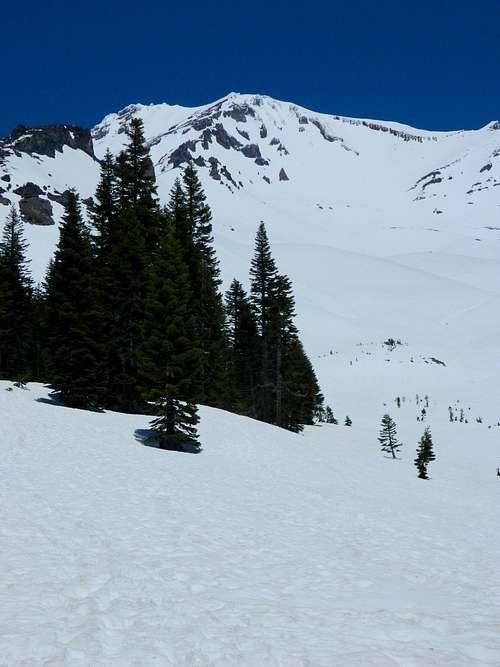




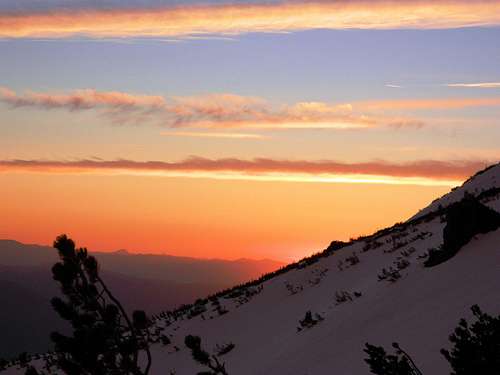
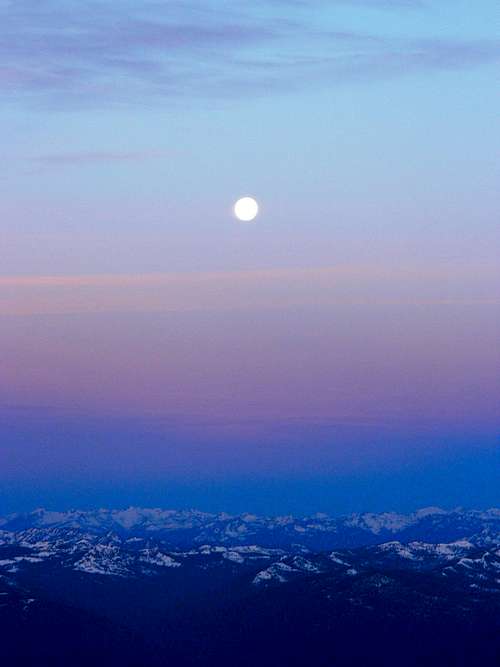
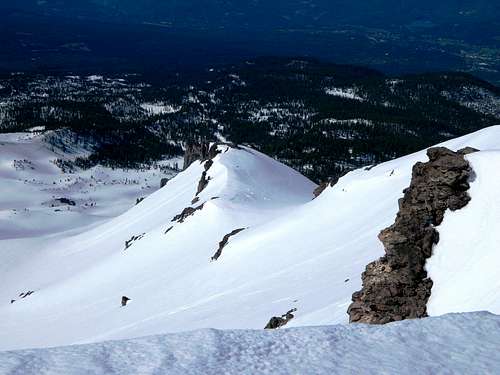



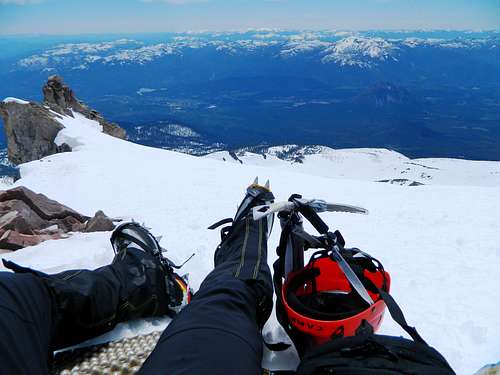
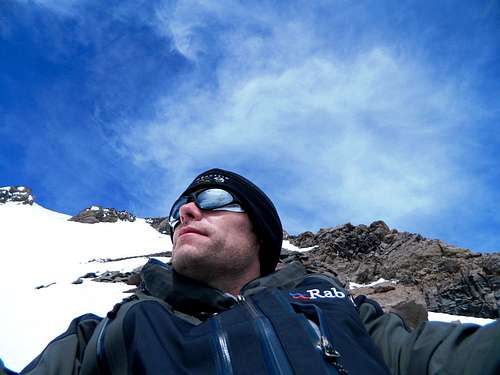
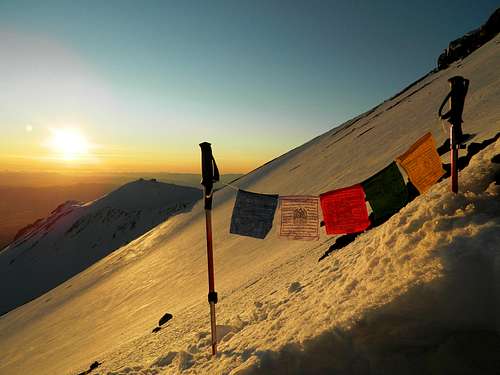
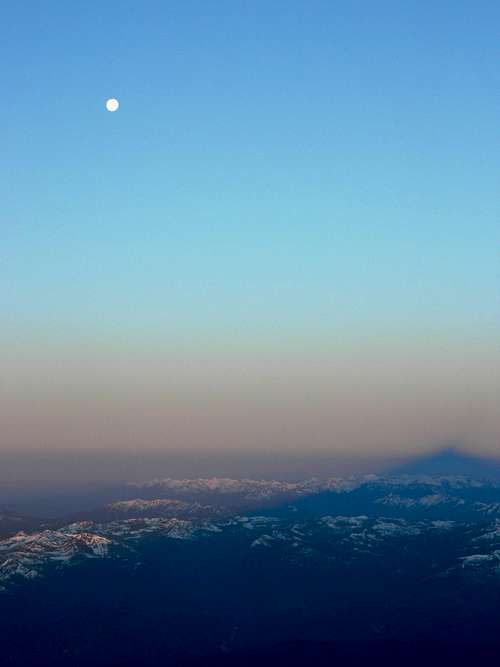
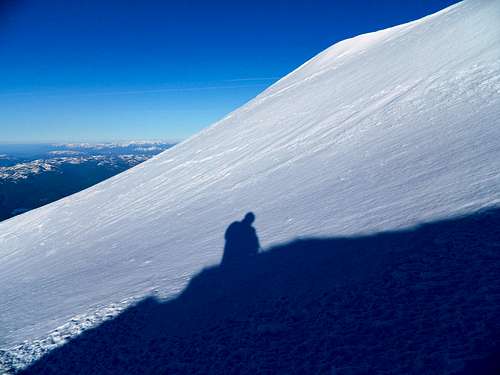
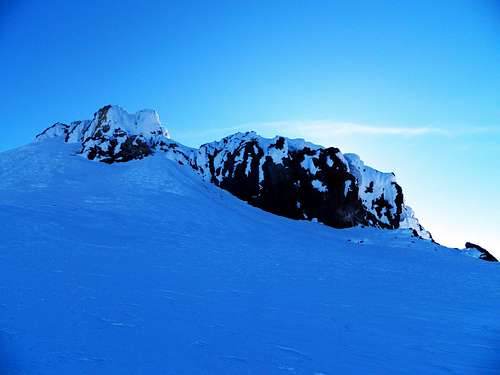
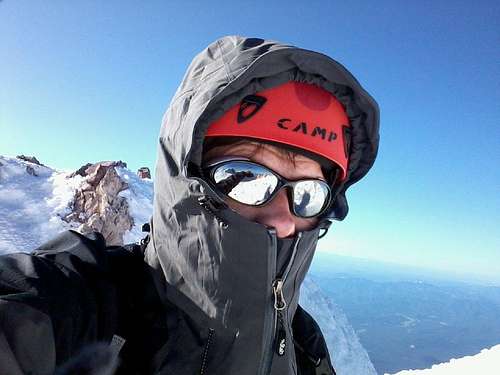


Comments
Post a Comment